Chinese Ghosts
In the series "Historical cities in China" an issue appeared on May 19th 2013, which contains 2 stamps that are interesting for us. Well, a series? The last issue before this one appeared in 2009, and the next issue came not earlier than in 2016. It was the 12th issue in 2013, and inimitable with the serial number one.
The issue consisting of 8 stamps
has been printed in counter sheets with each 15 times the same stamp, but also in 2 blocks with each 2x 4 different stamps.
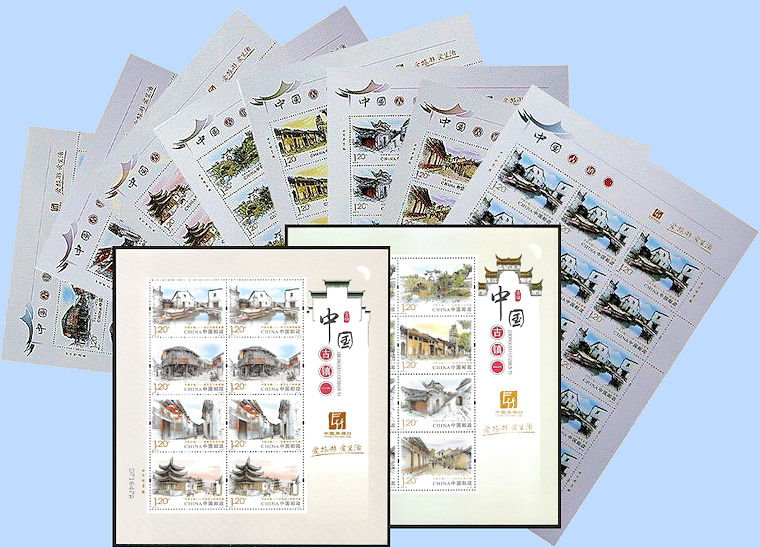
The complete issue
The stamps show images of streets in various restored old cities, in different provinces of the Peoples Republic. The value of each stamp is 1.20 yuan renminbi.
The Chinese currency needs some explanation. The Chinese yuan is in fact a collective noun for different currencies, that were used in the Chinese provinces. In 2010 the Chinese bank established one currency: the renminbi (with lowercast r). Since that time people are speaking from renminbi yuan, but this is still divided in (local) currencies like the fen, jiao and yen. The sub-division of the yuan is in sen, and yuan notes exist in the languages Chinese, Hanyu pinyin (where the Dutch nickname for money "ping-ping" comes from), Mongolian, Tibetan, Uyghur and Zhuangyu. Simple, isn't is?
The depicted cities are amongst others:
- Qiantong Town in Nianghai, Zhejiang
- Jingziguan Town in Xichuan, Henan
- Heshun Town in Tengchong, Yunnan
- Tangjiawan Town in Zhuhai, Guangdong
- Lizhuang Town in Yibin, Sichuan
- Jingsheng Town in Lingshi, Shanxi
The two depicted cities that are important for us are:
- Laitan Town in Hechuan, Chongqing, where there is a kind of open-air museum
- Heping Town in Shaowu, Fujian, where on the mountain slope one street is kept in imperial state for tourists
In Laitan is the shop as depicted on the stamps on the corner of Laixing street. Of course the museum is a closed park, but still we see a few motorcycles in the stamp image.
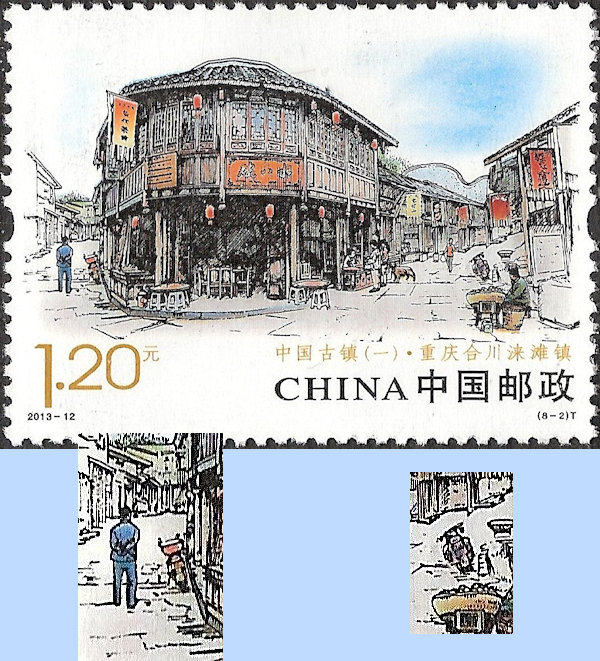
Usually some specimens are distributed before the date of issue of a stamp series, especially amongst important people and publishers, to provoke enthusiasm for the issue. This was also done for this series. But, and there these issues become interesting for us, the specimen stamps differ from the finally issued version. The image has been enlivened with bright colours, and when you compare the specimen and final stamp you see that the persons have been put in other places.
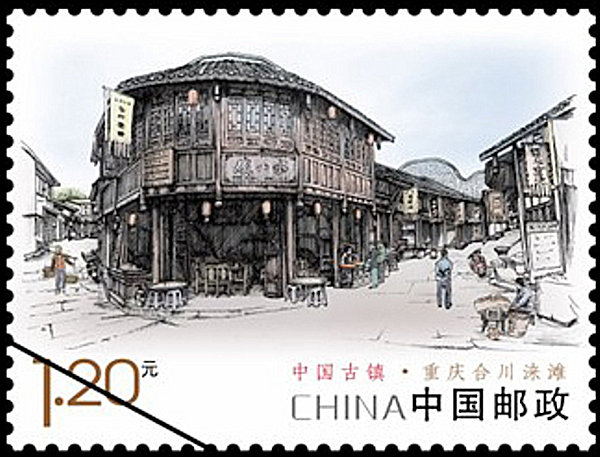
Specimen stamp with less colour and the man on another place
The other stamp of our interest is one with a streetview of Heping Town, Shaowu in the province Fujian. On the stamp we see one of the small streets in the city of Heping that are still in original condition, like they were in the Ming Dynasty (1368-1644). It is a public street and together with a few other streets forms one of the oldest districts in China. Also here we see a ghostrider. on the specimen stamp we don't find a motorcyclist, but on the final issue there suddenly is one. Funny.
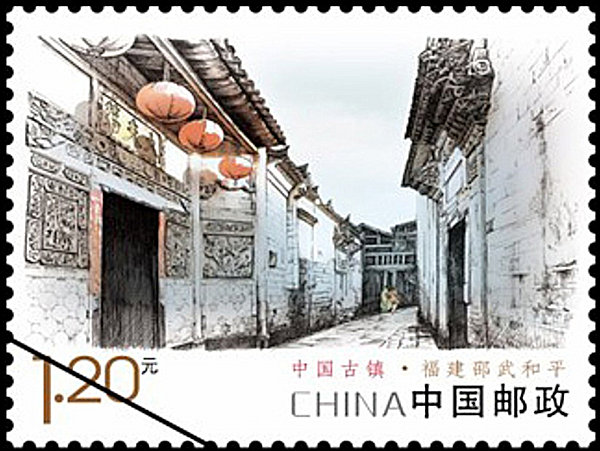
Specimen stamp without motorcyclist
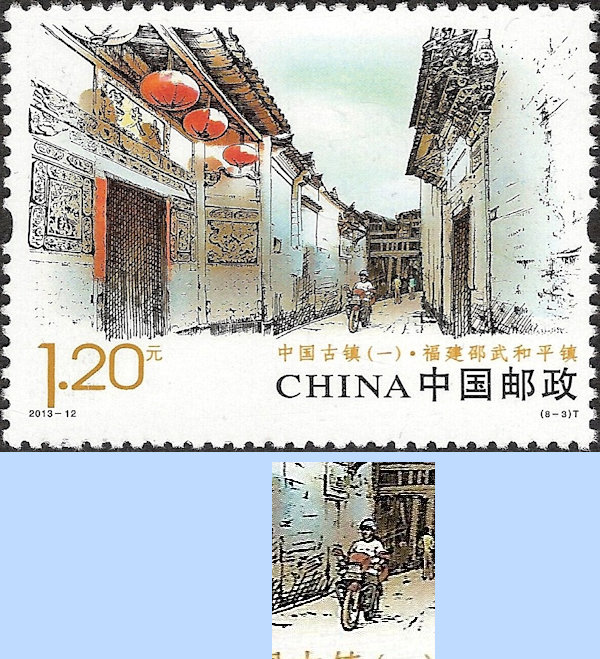
Of course there can always slip some error into a stamp issue, but most times the complete issue, including advertising material and specimen stamps, is made the same.
For collectors this time also a so-called Bunt print, or in other words: a black printing, has been issued. This Bunt print has appeared as block issue with all 8 stamps together. The images as used in this block are the same as on the specimen stamps shown here.


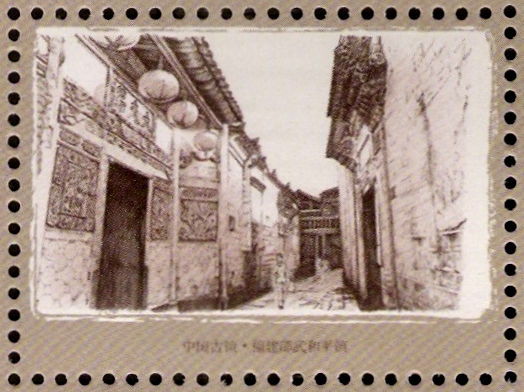
Hans de Kloet
Top - Back to former page - Home |







